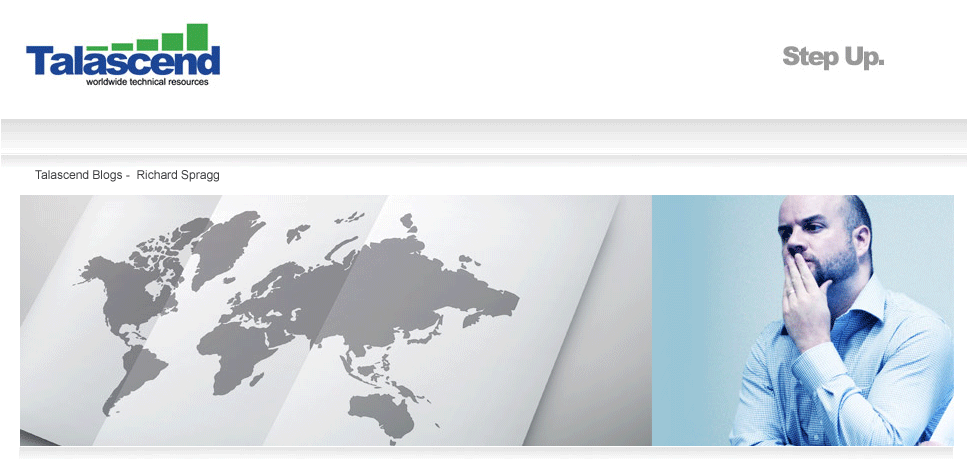When all is said and done you’ll
either win or lose in a job interview. Everyone involved in the process – on both
sides of the table - should be attempting to win. If it’s a mutual win, great.
If it’s just you who wins, that will do.
In most cases, the winner will be
the person who listens most.
 How do you ‘win’ at interviewing?
Simple. You put yourself in the position where you have the decision making
power as to what happens next.
How do you ‘win’ at interviewing?
Simple. You put yourself in the position where you have the decision making
power as to what happens next.If you’re the candidate, that means that the interviewer wants to hire you and you understand enough about the role to know whether or not you should take it. As an interviewer, that means that the candidate wants the job for sure, and you've learned enough about them to know whether you want to pull the trigger.
There are two mutual wins in
interviewing. First, the right candidate is offered the job and they accept.
Second, the wrong candidate is not offered the job and moves on to other
things.
To get to one of these mutual
wins, you’re going to have to get the balance of talking and listening right. Interviews are a collaborative exercise - you can't drive a successful meeting entirely by yourself. You have to meet each other half way and share the burden of making the meeting flow. A meeting that's awkward and disjointed is highly unlikely to result in a mutual win.
Within this context, you will have a choice of listening and encouraging the other person to talk, or talking yourself. Try to come down on the side of listening.
Within this context, you will have a choice of listening and encouraging the other person to talk, or talking yourself. Try to come down on the side of listening.
Most people don’t listen with intent to understand; they listen with
the intent to reply. says Stephen Covey, the late great business writer. Job interviews are especially prone
to this behavior. From the candidate’s perspective, this is pretty reasonable.
After all you’re there to be judged on your answers, it’s not surprising that
you might spend the time when you’re not talking, thinking what to say next.
Then you have your internal monologue to contend with – am I presenting myself well? Does she like me? How is this going? Will this help me find a job? With all of this going on, it’s not surprising that you might struggle to
listen effectively. And listening is critical to the process you’re engaged in.
I’ve had countless candidates
come back from interviews and say that they didn’t really talk much themselves –
that the interviewer did most of the talking. He or she gave an extensive history
of the company, talked about the team and their objectives. The candidate is
usually worried at this point, because they tend to feel like they haven’t been
given the chance to adequately impress the interviewer. They seem surprised
when I tell them that this is a good thing. They are skeptical, but I know that
the vast majority of people who find themselves in this position end up getting
through to the next stage in the process.
Human beings are never happier
than when someone is listening. Whether we are ego maniacs who want to inflict
our opinions on people by making speeches to rooms full of people (or by
writing blogs that amount to the same thing) or if we take pleasure in quietly
telling our husbands and wives about the day we’ve had. The words you listen to me too much were never
spoken by anybody ever. We want to be listened to; it is us being told that we
matter, that what we have to say is important.
If we feel like someone is
listening to us we tend to like them. We reflect their respect. All the more if
we’re talking about something we’re passionate about. I swear I’ve been at
dinner parties where some guy is rambling on for an hour about their latest
project or interest. Whatever is exciting them. They talk and talk, and out of
sheer politeness beyond all reasonable expectation – the curse of the British –
I sit there and listen, nodding with interest at the right moments and
occasionally intimating surprise or agreement wherever I feel like they need
it. Later, the host will say to me –‘Oh Jerry said you and he were getting on
very well, he really enjoyed your conversation.’ I chuckle. I barely said a
word, but Jerry was so pleased to talk about his kid’s advanced placement
program and so bursting with good feeling that he’d projected those feelings on
to me. For all he knew I wanted to talk to him about applying Scientology
principles to a new interpretation of Mein Kampf. But in his mind – I was
someone he liked. And he had no basis for this. He was talking into a mirror.
So as candidates for jobs if we prove
ourselves good listeners, we’re likely to see the interviewer leave with a
positive impression. Any sales person worth their salt will tell you that a
good sales meeting is one where the prospect does most of the talking.
In a job interview situation, whichever
side of the table you’re sat on, you need to make sure that you are listening
enough to make it productive. (As always, we’re not talking about basics here –
long protracted silences are bad, so are short answers and introverted refusal
to let conversation flow – we will take some things
as read.)
The point is that in a healthy
conversational interview, you should always lean toward listening if you’re
allowed to. Asking questions, showing genuine interest – these things will help
to keep your interviewer talking, and if they’re enjoying talking to you, the
chances are they’re liking you.
Good listeners win friends
easily, they attract people to them and they take part in successful job
interviews.
Nobody ever listened their way
out of a job.
Next Week - Part Three – More Interview Mistakes
Look for live engineering and construction jobs on Talascend.com
Some questions for comments: What are the most common mistakes you’ve seen? How do you think people can make interviews easier on themselves and others?
Richard Spragg writes about engineering and construction jobs, and business advice in staffing and recruitment



